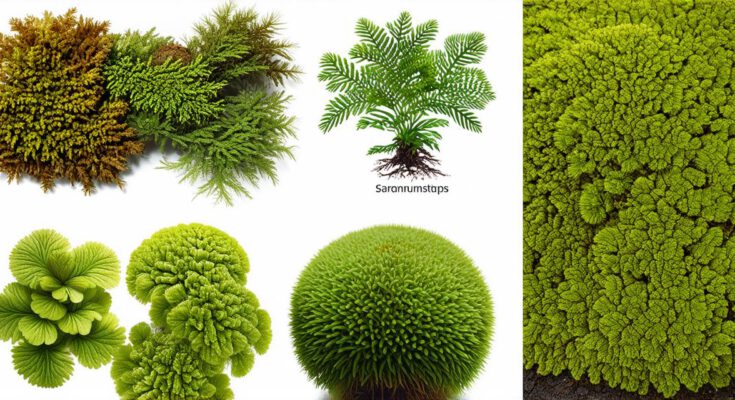Classification of Cryptogams:
Cryptogams can be classified into two broad categories: mosses and liverworts. These plants have many similarities, but there are also some notable differences between them. Mosses are further classified into two groups: bryophytes and pteridophytes.
Types of Cryptogams:
-
Mosses: Mosses are one of the most diverse groups of cryptogams, with over 40,000 species worldwide. They can be found in nearly every part of the world and are adapted to a wide range of habitats, from rocky outcrops to damp, shaded areas. Mosses have a unique ability to photosynthesize and can capture nutrients directly from the air. This adaptation allows them to thrive in environments where other plants cannot survive.
-
Liverworts: Liverworts are another group of cryptogams that are known for their unique appearance. They have a soft, leathery texture and are often compared to the liver due to their shape. Liverworts can be found in most parts of the world and are adapted to a wide range of habitats, from rocky outcrops to damp, shaded areas. Unlike mosses, they do not have specialized structures for photosynthesis and instead rely on bacteria to capture nutrients.
-
Hornworts: Hornworts are a rare and distinctive group of cryptogams that are found in cool, wet environments around the world. They have a unique structure that resembles a horn or a spiral, which gives them their name. Hornworts do not have specialized structures for photosynthesis and rely on bacteria to capture nutrients.
-
Clubmosses: Clubmosses are a group of mosses that are known for their distinctive appearance. They have a club-shaped structure that gives them their name, and they can be found in most parts of the world. Clubmosses have specialized structures for photosynthesis and can capture nutrients directly from the air.
-
Ferns: Ferns are a group of pteridophytes that are known for their unique appearance. They have feathery fronds and can be found in most parts of the world. Ferns do not have specialized structures for photosynthesis and rely on bacteria to capture nutrients.
-
Horsetails: Horsetails are a group of pteridophytes that are known for their unique appearance. They have a long, whip-like structure that gives them their name, and they can be found in most parts of the world. Horsetails do not have specialized structures for photosynthesis and rely on bacteria to capture nutrients.
FAQs:
1. What is the difference between mosses and liverworts?
Mosses and liverworts are both groups of cryptogams, but they have some notable differences. Mosses have a unique ability to photosynthesize and can capture nutrients directly from the air, while liverworts do not have specialized structures for photosynthesis and instead rely on bacteria to capture nutrients.
2. What are hornworts?
Hornworts are a rare and distinctive group of cryptogams that are found in cool, wet environments around the world. They have a unique structure that resembles a horn or a spiral, which gives them their name. Hornworts do not have specialized structures for photosynthesis and rely on bacteria to capture nutrients.
3. What are clubmosses?
Clubmosses are a group of mosses that are known for their distinctive appearance. They have a club-shaped structure that gives them their name, and they can be found in most parts of the world. Clubmosses have specialized structures for photosynthesis and can capture nutrients directly from the air.
4. What is the role of cryptogams in their ecosystems?
Cryptogams play an important role in their ecosystems by capturing nutrients directly from the air or through bacteria and providing a food source for other organisms. They also help maintain soil health and prevent erosion.
5. Are there any practical uses for cryptogams?
Yes, some species of mosses are used in medicine to treat respiratory problems, while others have been used as bioindicators to monitor air quality. Additionally, some species of ferns are used in horticulture and as ornamental plants.
Conclusion:
Cryptogams are fascinating organisms that continue to capture the imagination of scientists and nature enthusiasts alike. With their unique adaptations and diverse habitats, these plants have much to teach us about the natural world. By understanding the different types and how they are classified, we can gain a deeper appreciation for the incredible diversity of life on Earth. So next time you encounter a strange, mysterious-looking plant in the wild, take a moment to marvel at the wonders of cryptogams.



